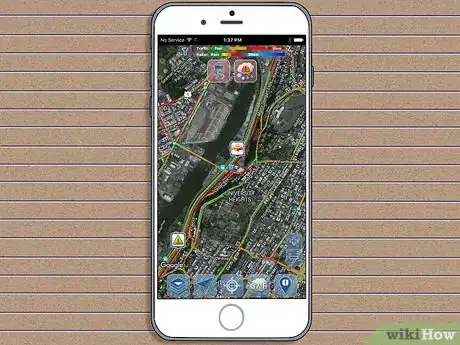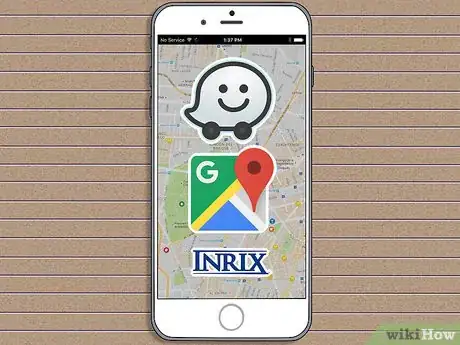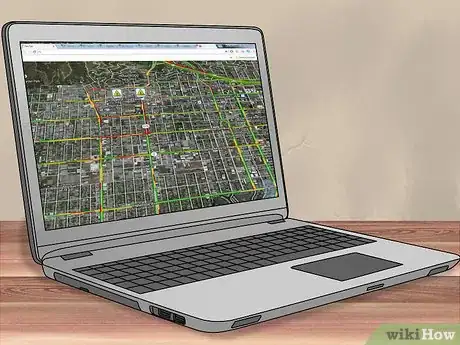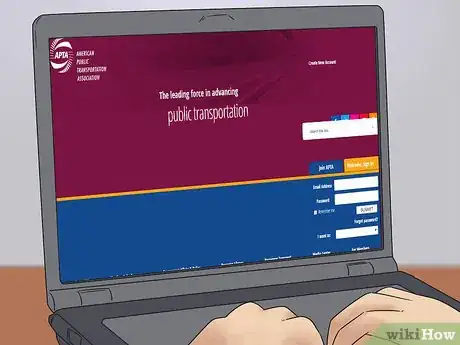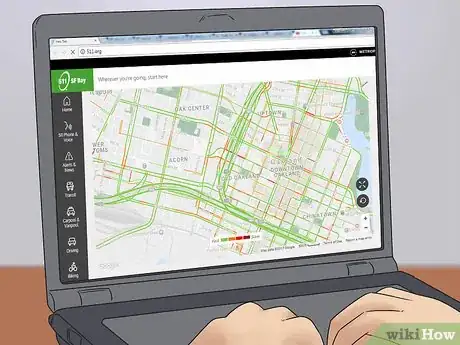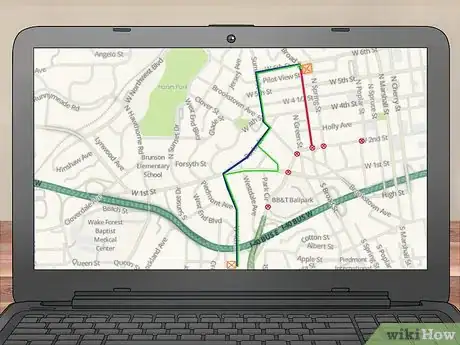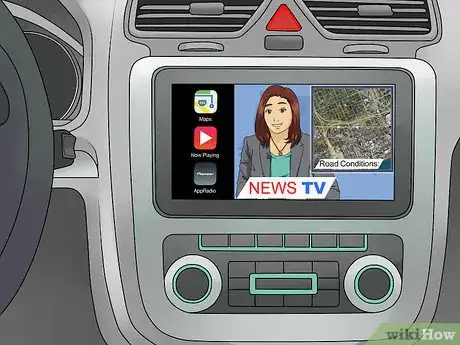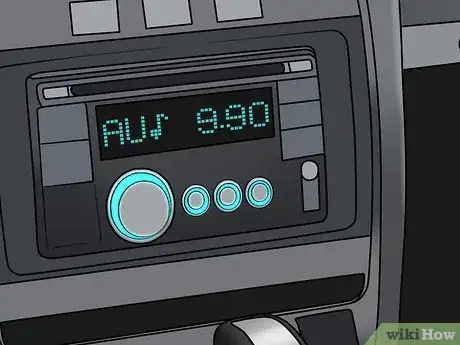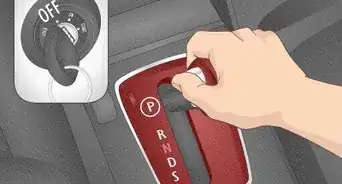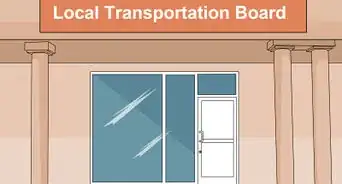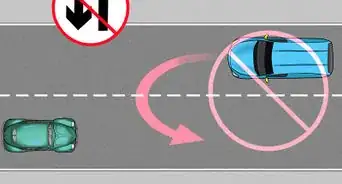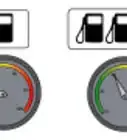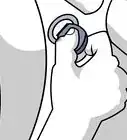This article was co-authored by wikiHow Staff. Our trained team of editors and researchers validate articles for accuracy and comprehensiveness. wikiHow's Content Management Team carefully monitors the work from our editorial staff to ensure that each article is backed by trusted research and meets our high quality standards.
There are 14 references cited in this article, which can be found at the bottom of the page.
This article has been viewed 79,335 times.
Learn more...
Severe weather, accidents, or construction can add a significant amount of time to your travels and make you late for appointments. Confirm road conditions before leaving your home on local news websites or a national road condition online service. Find out conditions on the TV by tuning in to your local news. Verify conditions by phone by calling a road closure hotline, like 5-1-1 for most of North America.
Steps
Getting Info on Your Computer or Smartphone
-
1Look up closures on transit apps. In many areas of North America, states or regions offer a free-to-use app through the 5-1-1 road information service.[1] Search for something like "5-1-1 road closure app for Michigan" in the app store to find one suitable for where you live.
- Local departments of transportation may also offer apps for checking road conditions. Search the app store for "traffic apps for Chicago" or something similar.
- The main news stations for your area may also support apps that update weather and road conditions. Look for apps like these in the app store by searching it for a local news station.
-
2Use a turn-by-turn navigation app. Many of these navigation apps update road and traffic conditions in real time. Three common apps like this include Waze, Google Maps, and INRIX.[2] Download these from the app store and use them to navigate to your destination.Advertisement
-
3Check the road conditions on the website of your local news. The website for your local news should provide up-to-date information on road closures and conditions. This information can usually be navigated to by selecting the “Weather” or “Traffic” button at the top or side of the page.
- Some sites include interactive maps that provide additional information. Some, for example, estimate the amount of time it will take to reach your destination in current conditions.
-
4Find out conditions on a local department of transportation website. The websites of regional or local departments of transportation usually include road condition information. Depending on the services provided in your region, there may also be a number available to call the department directly.[3]
- In some communities, especially smaller ones, you may have a road commission instead of an official department of transportation.
-
5Use an online national road condition information service. Some countries have a national or international road condition information service. In North American countries, the road condition hotline (accessible by dialing 5-1-1 on a phone) often also provides online updates.[4]
- Most region-specific 5-1-1 updates can be found with an online keyword search for something like, “5-1-1 online updates for Michigan.”
-
6Verify road conditions with a shipping website. Shipping and freight companies rely on accurate road information to transport things in a timely fashion. Do an online keyword search for “road conditions for truck drivers” to find road condition informational websites like these.
- Two common websites used by truck drivers include TruckMiles.com and WideLoadShipping.com. Many of these sites are intended for drivers on the road and are formatted for mobile browsers.[5]
-
7Plan an alternate route when necessary. If the conditions are poor or certain roads closed, you’ll have to find a different route or stay home. Many map services, like GoogleMaps, Waze, and MapQuest, allow you to choose options like “Avoid Highways” for when highways are unsafe.[6] Most services also offer a few alternate routes with every search for directions.
- Send directions from the map service to your phone so you can reference them should you get lost. Avoid looking at the directions while driving, as this can dangerously distract you.[7]
- Some drivers may feel most comfortable with a physical copy of the directions on hand. If this is true for you, print out the map and directions before leaving.
Using Your TV, Radio, or Telephone
-
1Listen for the road condition information on local TV news. Switch your TV on and open the channel guide to find your local news station. Frequently, low numbered channels, like channels 4, 7, and 12, feature local news. Your local news should talk about weather and road conditions at regular intervals[8]
- The segment on weather and road conditions may be short. If you walk away and miss the report, you’ll have to wait for the next update.
-
2Keep the TV tuned to local news to hear new closures. As conditions worsen, new roads may become dangerous and be closed. Keep your television on in the background as you get ready to leave so you can listen for possible new closures.
- You may want to mute the TV so you aren’t distracted by less important news. Set a timer for the next road condition report and unmute the TV to hear new closures.
- During extreme weather, like thunderstorms or snowstorms, most local TV news increases the frequency of road condition reporting.
-
3Tune in to local radio news. Local radio news usually will update traffic conditions hourly, if not more frequently. In severe weather conditions or in the event of a traffic jam, more frequent updates or special live reports are common.
- Listening to radio reports in your car won't be as distracting or dangerous as checking conditions on your phone while driving.[9]
-
4Set your radio to designated road condition radio stations. These stations are oftentimes advertised alongside highways. Keep an eye out for roadside signs with the station settings for these services. When you see the station number, set your radio to that frequency.
- Radio stations like this are generally for a designated area or region. When traveling long distances or across state lines, you may need to change to a new designated traffic station.[10]
-
5Call a road condition hotline. This might take the form of a designated local, state, or federal phone number. Find these numbers online at the websites of local, state, or federal departments of transportation.[11] Call the number and follow the directions provided to check road conditions.[12]
- In most areas in the US and Canada, you can reach the a road condition hotline by dialing 5-1-1 on your phone.[13]
- The condition of government roads in Australia can be checked by making a free call to the government funded hotline at 1800-246-199.[14]
- 5-1-1 road condition information is generally set up to update twice every hour in severe weather, though it may update less frequently in mild weather.
-
6Contact the location to which you’re traveling. Although major closures should be listed on the road condition hotline, the exact severity of conditions might not be clear. Call someone at the location you’re headed to for a more detailed idea of the conditions of local roads.
- In severe weather, many schools, workplaces, and vacationing spots try to provide phone support about road conditions or the establishment’s open/closed status.
Warnings
- Driving on unsafe road conditions could result in an accident or your car getting stuck. In these cases, you may need to pay a tow truck to get your car back on the road. Accidents may cause injury and/or require repairs.⧼thumbs_response⧽
References
- ↑ http://511.idaho.gov/
- ↑ https://www.compare.com/auto-insurance/news/top-3-best-traffic-apps
- ↑ http://www.apta.com/resources/links/Pages/default.aspx
- ↑ http://511.org/
- ↑ http://wideloadshipping.com/information/road-closures/
- ↑ https://support.google.com/maps/answer/144339
- ↑ http://time.com/4175674/google-maps-bing-driving-directions-phone/
- ↑ http://www.wxyz.com/traffic
- ↑ http://www.nsc.org/learn/NSC-Initiatives/Pages/priorities-cell-phone-crash-data.aspx
